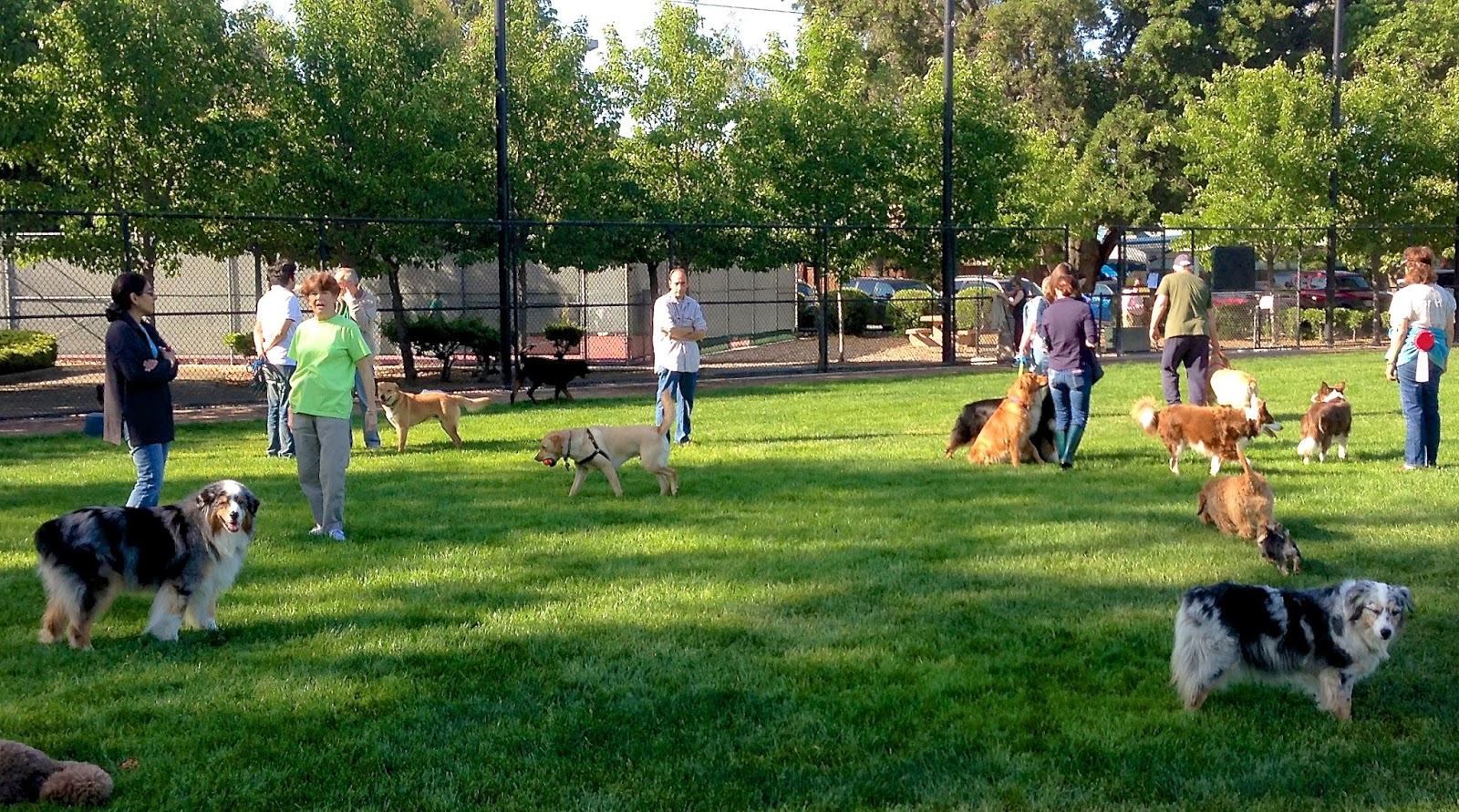Article by Cheryl McKenna, office manager and licensed estate agent.
Is there anything more uplifting than to see than your dog, in amongst a group of other pooches all running flat out happily around the dog park? Or the lone Border Collie who chases the ball, being chased by 8 other dogs who chase the dog who chases the ball? If dogs could smile (and I’m sure they do; tongue hanging out the side of the mouth, often with a bit of drool, usually running toward you flat out) this is where they would do it.
Fenced, off-leash dog parks have been around for a while but are growing in number and popularity. Not only do they have obvious benefits for the pooches themselves, but they also have benefits for us a community.
Ideally dog parks should be accessible, facilitating access for everyone including aged people or people with a disability to enter and exit safely. Companionship can be a crucial aspect of quality of life for people who are less mobile and more house bound and having a facility to allow for both exercising a dog and limited mobility is important.
Many ‘nuisance’ dog behaviours can be ‘cured’ with exercise. The dog that digs, the dog that barks, the dog that chews shoes – most of these dogs are just plain bored. A good run at an off-leash park will leave them happily pooped, usually too pooped to bother with the chewing and digging and barking.
It is also a great space to help your dog to learn to be social with other dogs. Dogs are a social animal, so the single dog at home often misses out on interaction with other dogs, or simply doesn’t know how to play with other pooches. When socialised from a young age, dogs quickly learn the ‘doggie social etiquette’ – who is the boss in most situations, how to roll on your back if the boss dog comes over to say hi, which dogs like to chase, which dogs like to be chased, and the important art of butt-sniffing. But this of course comes with a caveat. If you know that your dog is timid, or very hyperactive, or aggressive with other dogs, the impetus lies with you to manage your dog, and to not put any other dogs or their people at risk of injury. But that’s not to say that they shouldn’t come to the park – they just may need to stay on a leash or go at quieter times when there are few or no other dogs there.
As well as helping dogs to be social with other dogs, a huge thing that I noticed when I started going to our local dog park was that it also breaks down stereotypes of particular dog breeds. As with many stereotypes, it is very easy to brand all dogs of a particular breed because of the actions of a few. I have now grown to love little Staffy’s – an energetic breed that love nothing more than a full speed run then a belly scratch, and the big scary-looking cross breed with some kind of wolf hound in it, that looks like it would eat a small child who is really a huge sook, happier to play gently with the little dogs than run with the big ones. And to watch the focussed ball chasers – undivided worship if I have ever seen it. It is lovely watching people of all backgrounds and ages playing with dogs of all backgrounds and ages. It is also a great space to bring children, being mindful that many a grown man has had his legs taken out from under them by above Staffy having too much fun to watch out for humans. The real learning opportunity that it presents for children is a life skill – a great way to learn how to greet a dog you don’t know, how to be a responsible pet owner (they can learn a great deal from being the designated poo pickerupperer) and how to be confident around animals.
It also gives an opportunity for like-minded people to get together and talk ‘dog stuff or just ‘stuff’; another great chance to grow our sense of community and feeling of belonging.
The necessities
Dog parks should include access to water, for both 2 legged and 4 legged animals. A small, fixed container that can be emptied and refilled with ease is the best sort for dogs. Some natural shade is a boon in summer, making the park more user friendly on hot days.
Seating and some basic obstacles for dogs are also common – seating is a great encourager for older people to utilise the park.
A double gated entrance is a great logistical idea. This allows for dogs to enter the park gradually, and also to exit the park, rather than ‘releasing the hounds’ (both yours and other would-be escapees) straight into the public area or car park.
If the area contains vegetation (I challenge you to find me a dog who doesn’t love a good sniff of a bush or tree) then it should be established that the vegetation species is not toxic to dogs or their people, or of a spiky nature, which can potentially blind a dog (or owner retrieving an errant ball).
And of course, a plentiful supply of biodegradable poo bags is a must, along with a green waste bin to deposit the bag into. There is nothing surer than your dog choosing the furthest point away from you to do their business, and most owners (the others all know who they are) do the right thing and bag it up straight away. There will always be the rogue element who pretend they didn’t see their dog do it, or just straight out ignore it, but what can you say…most people are responsible. There are even occasionally some saintly wonderous angels who just pick up a poo if they see it. Nothing wrong with all doing our bit.
And, in a prominent location at the gate, signage laying out the do’s and don’ts. Some dog owners will always follow the rules, and others will simply believe that the rules don’t apply to them. This, while frustrating, is the case for all areas of life! But be the standard you expect. Use that peer pressure for good instead of evil. If there is a pervasive attitude of friendliness and responsibility newcomers will follow. If there is only one rule you follow let it be this – YOU are responsible for your dog and its actions.
Warrnambool currently has 25 identified off-leash areas, and 2 designated fenced off-leash dog parks which are utilised by an increasing number of dogs and their people. If there isn’t a dog park in your local area, get onto your council – bark for your park!

